
KDE lines up a truly free tablet operating system.
Why would you spend a few hundred dollars on a device that is little more than a smartphone (with a bigger screen, without the phone)?
Despite the success of Apple's iPad, that is a question that seems to have defeated most hardware and software vendors. MeeGo struggled to define a tablet user interface, never quite managing more than a pre-release. It presented a few simple options, such as watching videos, playing music or browsing the Web—really no more than a modern phone with a larger screen. Even the iPad, an acknowledged success, is little more than an oversize iPhone. Its “wall of apps” approach has been largely copied by the Android-based tablets so far appearing on the market.
The tablet sitting in your hand (or unused in one of your drawers) is a real computer. Can it do more than browse the Web and play videos? Marco Martin, well-known KDE hacker and basysKom employee, thinks so: “the fact that people download and use thousands of apps shows that there is the desire to do something more”. He dislikes the way “most mobile applications feel quite disconnected with each other”. Marco believes this is where KDE's new user interface and application set for touchscreen devices, Plasma Active, can shine.
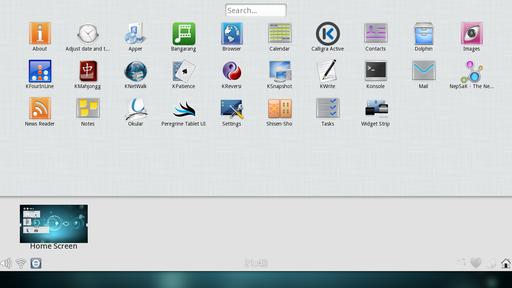
Figure 1. Plasma Active comes with a selection of applications, some more ready for touchscreens than others.
Plasma Active takes a new approach to touchscreen devices and tries to offer more than a set of applications for simple tasks. More than a desktop or even a notebook computer, a touchscreen device is likely to be carried around and used in different contexts, for different purposes. Plasma Active makes use of KDE's Activities, something that has confused desktop users (see the Activities—a Solution Looking for a Problem? sidebar) but, the developers believe, makes sense on tablet devices.
Aaron Seigo, a founding member of the Plasma Active Project and one of the main drivers behind KDE's Plasma family of user interfaces, hails Activities as a great step forward, claiming that “many find the ability to sort their information and applications between different activities greatly increases the value of the device in their lives”. He uses a personal example: “while on a recent vacation I relied on Activities to keep track of our itineraries and plans, some work tasks and to keep up with things back home. I have a few Android tablets, and none of them would have been nearly as useful.”
When you launch Plasma Active for the first time (see the Try Plasma Active Two sidebar for how to try it), you are presented with what appears to be a fairly standard KDE desktop. The main things out of place are a panel at the top of the screen and the lack of an obvious application menu. Two small tabs halfway up either side of the screen also are not found in other KDE workspaces. Between them, these three items provide your control of Plasma Active. Drag the top panel down a little, and you will see a wide, touch-friendly task bar, with live previews of the running applications and the Home Screen that effectively minimizes all running programs. Drag a bit farther down, and you are presented with a wall of application icons, not unlike those provided on Android or Apple tablets, with a search box you can use to locate the correct application quickly. So far, not so very revolutionary.
It is the two tabs on the sides of the screen that are unique to Plasma Active. The tab on the right, when dragged out, reveals a wheel of Activities, each represented by a thumbnail image. A few selections are predefined, including “Introduction” that provides some information on getting started; “Vacation planning”, set up for just that; and “My first activity”, which invites you to make your own. You can delete, customize or add activities using icons that are visible with the Activity wheel.
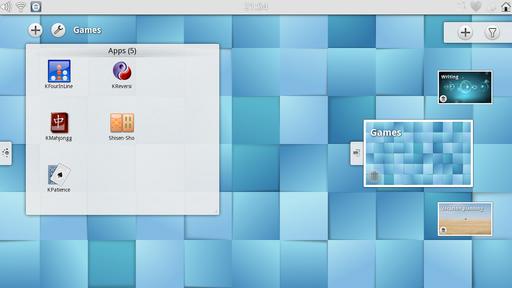
Figure 3. You can have an Activity for all the things you need to do—and for the things you want to do.
Selecting an Activity changes the desktop background and desktop widgets to those associated with the Activity. Choose the vacation planning Activity, and you are presented with a picture of a hay field as the desktop background and have the KDE weather forecast widget and bookmarks for OpenStreetMap, Wikitravel and a rail operator on your desktop. You can open a browser and start booking your holiday, but if your child (or you) suddenly has an overpowering urge to play Solitaire, you can just switch to an Activity set up for games. If you check the task bar by pulling down the top panel, you will see that it shows only the applications from the current Activity, so your holiday booking in the vacation planning Activity is safe from little fingers accidentally closing the browser or upgrading you all to first-class transatlantic travel. Once your child (or you) have had your game-playing fix, you can use the Activities wheel to get back to booking your holiday quickly.
The tab on the left of the screen reveals Plasma Active's “Recommendations”: links to files, widgets and contacts that might be relevant to the current activity. This is based on Nepomuk, KDE's semantic storage technology, which draws links between items based on the context of their use. Marco explains that this enables “the information stored on the device by users to be kept in a central place, allowing them to treat in the same way and display in a coherent way everything, regardless if it is a file, a contact, a bookmark or information about a location, linking them together with semantic information”. What this means in practice is that the Recommendations are able to be more than a list of recently used or most-accessed files, suggesting documents that often are used at the same time as those presently open or often used within the current Activity (the recommendations are tailored to each Activity). While writing this article, it suggested some irrelevant items, but the system quickly learned to suggest screenshots I had collected and suggested adding the Linux Journal author guidelines and Plasma Active Wiki pages to my bookmarks. The idea is that the system learns from its user and becomes ever more useful over time, and based on my experience, I give it a cautious thumbs-up.
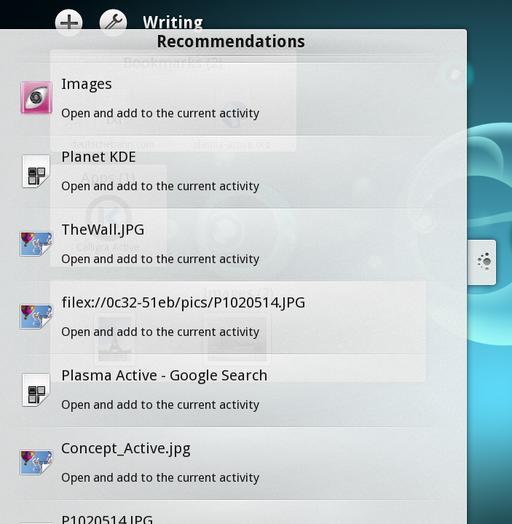
Figure 4. Plasma Active provides Recommendations of files and actions that are relevant to the task you are working on.
Nepomuk has, since it was first introduced in KDE software in 2008, been the target of many complaints about resource usage, something that is likely to be of even greater concern on a low-powered portable device. Marco, however, points out that “on a mobile device the stored data is very small compared to a desktop, and measurements have shown that with the limited number of items in it, the memory usage stays very small”, while, of course, using a central store also “avoids the necessity to build different storage/indexing for every application”. Aaron agrees: “the devices we currently target are all in the 600MHz to 1GHz range with 256MB or more of RAM. On these devices, it works acceptably”. Nevertheless, the developers have been working on “numerous optimizations and improvements”, and Aaron acknowledges there is always the possibility of “stripping out Nepomuk for some very low-end, in terms of hardware and user interaction, scenarios”. I did not come across any of the slowness that sometimes accompanies extensive indexing on the desktop.
The basic user interface seems slick and well thought out, and through Activities, it does offer something different from the competition. However, a computer is only as good as its applications, and if Plasma Active is to be a success, KDE must provide a compelling suite of touch-friendly applications.
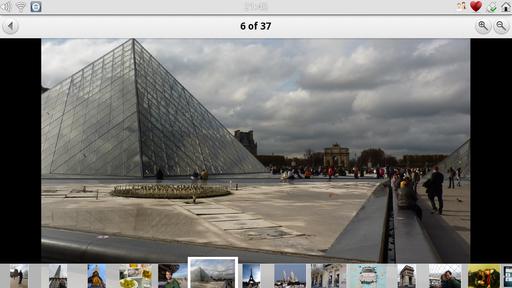
Figure 5. The applications that already have been adjusted for use with Plasma Active, such as the image viewer, work well.
A few “Active” variants of established KDE applications already are available. These include those that have been largely designed from the ground up for Plasma Active, such as the Web browser and image viewer, both of which were easy to use. Some other applications, such as the media player Bangarang, have received modifications to make them a little more touch-friendly. There are dedicated Active versions of the Kontact suite of groupware applications. Each of these are easy to use with a stubby finger, but their interfaces are so different from their desktop counterparts that even if you are an experienced Kontact user, you will find they take a little getting used to. Calligra, KDE's productivity suite, also is available in an Active version, but it felt slow on the device I used. However, Calligra's underlying technology already has been used in the successful FreOffice viewers for Nokia's mobile phones, so it is likely the performance will improve.
Some other applications, such as Dolphin (the KDE file manager), have not been adapted for touch-friendly use—and it shows. A similar interface is used in the Open and Save dialogs of most applications, but these will all be improved in future versions.
The most essential of applications on a tablet, the on-screen keyboard, works very well with easy-to-touch buttons and a sensible layout. It appears when needed, and it can be switched from the bottom to the top of the screen if desired.
Another new feature in Plasma Active is the presence of Share, Like and Connect buttons in the top panel. These make it easy to share content instantly, such as images, to social networks or on-line storage; “like” things on either social networks or locally (for example, bookmarking a page); and connect things together, such as linking a document or a page to the current Activity so that it always will be readily available in the future. This way, if you want quick access to an image, just click the Connect icon to add it as a widget on the desktop of the present Activity.
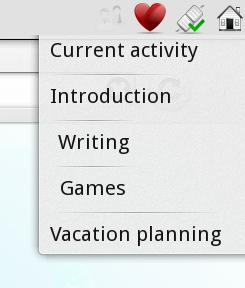
Figure 7. You easily can associate a file or Web page with an Activity by using the Connect button.
Plasma Active has been unusual among KDE projects due to the heavy involvement of companies from the start. Among these, basysKom has employed developers to work on Contour, the combination of Activities and Recommendations at the center of the user experience. Marco states that “everyone from the community is welcome to join and contribute, just like any other KDE project—companies are members of the community as well and are helping in many tasks (also the less fun ones in order to give to it the level of quality needed for an actual product)”. Companies also are making it easy to try Plasma Active, with live images provided by basysKom and open-slx (see the Try Plasma Active Two sidebar).
In the past, a large part of KDE's focus in the mobile space has been on MeeGo-powered devices, particularly those created by Nokia. However, the decision of Nokia to use Windows as the base for its smartphones and Intel's subsequent dropping of MeeGo in favor of its collaboration with Samsung, Tizen, has changed things. These changes do not, however, unduly concern the KDE developers. Aaron points out that “Plasma Active is not welded to any one OS and is highly portable”, and indeed, there are “images with OpenSUSE, MeeGo and Mer kernels and userlands beneath the Plasma Active UI”.
ARM devices running Android have proven to be very popular, and Plasma Active also is targeting some of this hardware, with an ARM-ready image already available built on software from the Mer Project. But what about Android itself? It is not presently the most appealing alternative for Marco, who argues that “Android, while released with an open-source license is tightly controlled by Google and doesn't leave much room for a developer community to grow and contribute”. He does, however, acknowledge that Android “is a good platform indeed and we don't exclude some integration work with it in the future”.
There also are possibilities of Plasma Active or related technologies targeting much more than just tablets. Aaron notes that already “some are running it on handset-style devices”, but that “the current user experience has been designed with a tablet in mind”. He plans, however, to start working on “interfaces that are designed specifically for other form factors, such as set-top boxes and handsets in the future”. A key enabler for this is Plasma's design: “Plasma allows for multiple, and highly diverse, user interfaces without starting from scratch. Plasma Desktop, Netbook and now Active for tablets showcases this very nicely: they are all very different on the surface from each other, but share nearly all the implementation code beneath.”
Plasma Active is still young software. Plasma Active Two was released shortly before this article was written and is the version discussed here. Plasma Active Three is expected in summer 2012 and “will be focusing on new major feature and application introductions”, according to Aaron. From a purely end-user perspective, the limited number of touch-friendly applications means Plasma Active is not ready yet. Nonetheless, it is well worth trying out and could become compelling by the time of its third release later this year. It already feels more polished and complete than any of the MeeGo tablet pre-releases.
There are other reasons to get excited about Plasma Active. For Marco, the motivation for starting work on Plasma Active had “different reasons, both purely technological and social ones”. The social ones are perhaps best summed up by Aaron: “right now, there is too much focus on created devices that serve the owner of the application store and focus on consumption of new devices just for the sake of the newness of the device”, something he believes has “largely stalled progress”.
Aaron sees a different future for Plasma Active and those who choose to contribute to or use the software: “We should be looking at how to support people's lives and in doing so make them better. This needs to be done in a socially responsible manner, which means free and open-source software as well as open processes must drive the development. This is the point and purpose of Plasma Active.”